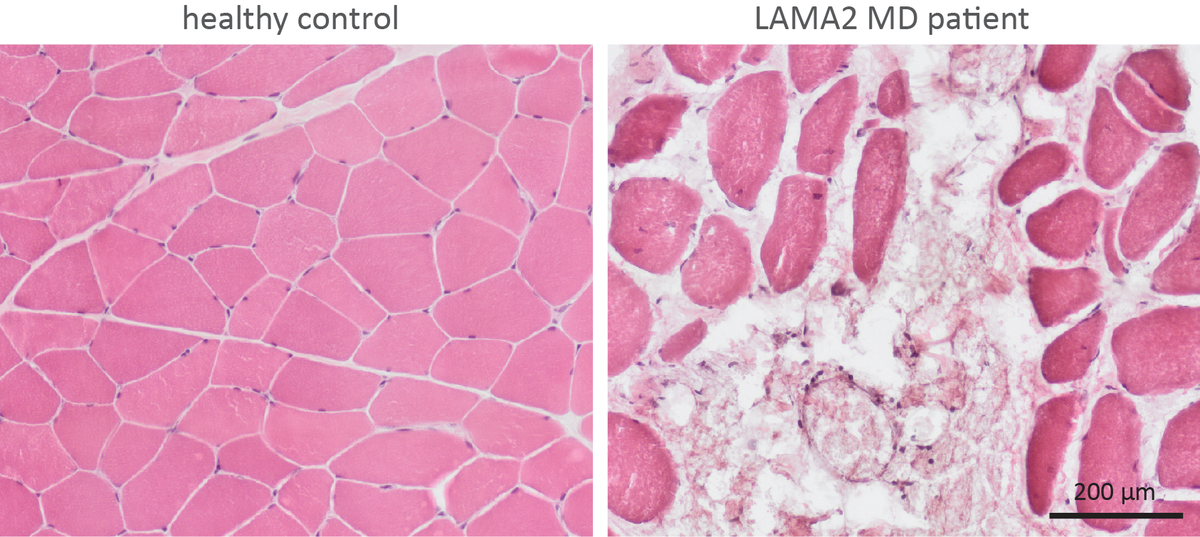LAMA2-related muscular dystrophy (LAMA2 MD; also called MDC1A)
Congenital muscular dystrophies (CMDs) are a group of genetic muscle diseases with onset at birth or very early infancy. The more than 30 known forms of these neuromuscular diseases differ in the type of genetic defect and in the severity of disease progression. The muscles of the affected children progressively lose strength and degenerate over time. Progressive muscle weakness, joint contractures and respiratory insufficiency characterize most CMDs and patients often die before they reach adulthood. Currently, there is no treatment for this life-threatening genetic disease available.

Cross-sections of skeletal muscle biopsies from a healthy control subject (left) and a patient with LAMA2 MD (right). Diseased muscle tissue shows signs of degeneration, connective tissue infiltration and muscle fiber loss.
Laminins are proteins of the extracellular matrix that are important in many tissues for the development, stability and survival of cells. LAMA2-related muscular dystrophy (LAMA2), formerly known as merosin-deficient congenital muscular dystrophy (MDC1A), is the most common forms of CMD.
LAMA2 MD is caused by mutations in the LAMA2 gene encoding the α2 subunit of laminin-211, a protein that stabilizes muscle fibers. Laminin-α2 is an essential component of the extracellular matrix that surrounds and stabilizes muscle fibers during cycles of contraction and relaxation. Mutations in the LAMA2 gene results in laminin-α2 loss and a fragile extracellular matrix. Consequently, muscles of LAMA2 MD patients are frequently damaged, leading to progressive muscle wasting and weakness.
Children affected by LAMA2 MD usually suffer from poor muscle tone and strength already at birth, and are therefore called “floppy infants”. Most of the affected children never learn to walk independently. The respiratory muscles are also weak and continue to degenerate, resulting in life-threatening consequences, such as respiratory insufficiency, and early mortality.


